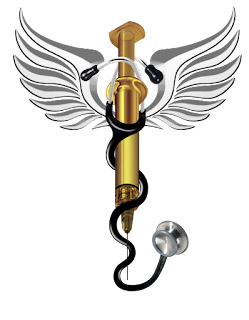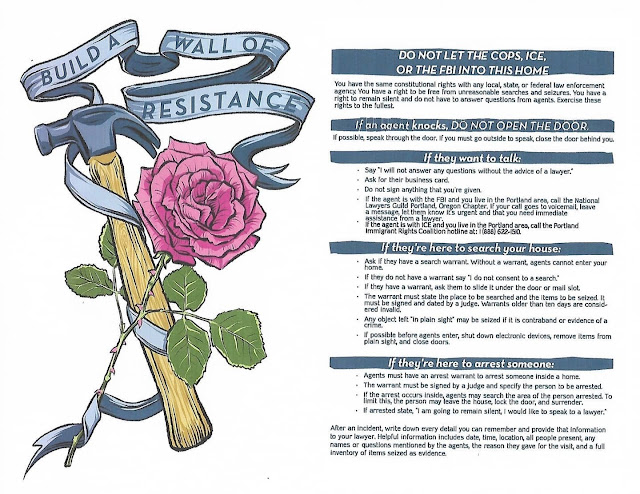DRS MARCH ONE SPEED
When approaching a scene where someone has been injured and is in need of first aid, we can use the mnemonic DRS MARCH ONE SPEED to help prioritize our actions.
D – Danger – The first and most important step in providing care to someone who has been injured is to ensure that we do not become injured ourselves. Look for danger as you approach the patient. Is the scene safe? Can whatever resulted in the patient’s injuries also injure you? Can the patient move out of the danger area on their own?
R – Responsiveness – Call out to the patient. Are they responsive, conscious, alert? If the patient is responsive get their consent to help them. If the patient is not responsive, consent may be implied. Assess the patient’s level of responsiveness using AVPU (Alert, Verbal, Pain, Unresponsive).
S – Substance Isolation – Put on protective gear: gloves, mask, and eye protection to prevent coming into contact with bodily fluids such as blood, saliva, vomit, etc. Also avoid contact with substances in the environment that may be harmful, such as a spilled chemical or poisonous plants.
M – Massive Hemorrhage – Check your patient for massive hemorrhage / severe bleeding. Look for arterial bleeding, blood-soaked clothing and pooling blood. Immediately take steps to control any severe bleeding. A person can die from severe blood loss more quickly than from any other treatable injury.
A – Airway – Make sure that the patient has a clear and open airway. If necessary open the patient’s airway using the head-tilt chin-lift or the jaw-thrust method. If something is obstructing the patient’s airway, safely remove the obstruction if you can.
R – Respirations – Is the patient breathing? Are respirations normal, labored, agonal?
C – Circulation – Check for a pulse. Does the patient have a pulse / heart beat? If not, begin CPR.
H – Hyper / Hypothermia – Is the patient’s core body temperature within normal range? A patient suffering from heat stroke or severe hypothermia needs immediate care to bring their core body temperature back into normal range.
O – Onset of Shock – Prevent the onset of shock. Shock may result from blood loss, blunt trauma, allergic reactions, poisons, severe burns, heatstroke, or other causes. Shock is a life-threatening condition. If not treated, as many as 1 in 5 people in shock will die from it. Always treat for shock.
The mnemonic TV SPARC CUBE aids in recognizing the signs and symptoms of shock.
>Thirst - Thirst or a dry mouth is a possible symptom of shock.
>Vomiting - Vomiting or nausea are possible signs of shock.
>Sweating - Excessive sweating is a possible sign of shock.
>Pulse - A rapid and hypokinetic pulse (a weak and fast pulse) is a sign of possible shock.
>Anxious - Abnormal levels anxiety or irritability are both possible symptoms of shock.
>Respirations - Rapid and shallow breathing is a possible sign of shock.
>Cool - Cold and clammy skin is a possible sign of shock.
>Cyanotic - Meaning to have bluish or purplish discoloration of the skin or mucous membranes - is a possible sign of shock.
>Unconscious - Extended or more extreme cases of shock are likely to lead to unconsciousness.
>Blood pressure low - Low blood pressure is a common sign for all types of shock.
>Eyes blank - Confusion, weakness, drowsiness, fainting, dizziness, disorientation, and expanded pupils are all possible signs and symptoms of shock which may be observable through the person's eyes.
N – Neurological / Spinal Injuries – Be aware of potential neurological or spinal injuries. Evaluate using NEXUS and use spinal immobilization when indicated.
E – Evaluate the immediate care you have just provided. If you stopped severe bleeding, is that bleeding still controlled? Is the patient’s airway still open and are they still breathing? Do they still have a pulse?
S – Send for Help – Once you’ve addressed immediate life threats, send for help. Someone with life-threatening injuries is going to need further care, and you will probably need assistance to provide that care. Are there others in the area that can come to your aid? Call for an ambulance / MEDEVAC or other rescue. When calling for help be prepared to tell the responders about the nature of the patient’s injuries and what type of support you need.
P – Protect the Patient from Further Harm – With life threats addressed and help on the way, protect your patient from further harm. Shield them from the elements, provide comfort and keep them calm.
E – Examine your patient for other injuries. Check for injuries, that while maybe not an immediate life threat, still require care and treatment. The mnemonic DCAP-BTLS (deformities, contusions, abrasions, punctures/penetrations, burns, tenderness, lacerations and swelling) can help you remember what else to look for. During this examination you should also take a brief patient history, using the mnemonic SAMPLE (signs and symptoms, allergies, medications, pertinent medical history, last ins and outs, events leading up to current issue). When the patient has pain as the chief complaint, use OPQRST mnemonic to evaluate the patient's pain. The mnemonic OPQRST stands for: onset, provocation / palliation, quality, radiation, severity, and time. Pertinent medical history includes the mnemonic MJ THREADS (myocardial infarction, jaundice, tuberculosis, hypertension, rheumatic fever, epilepsy, asthma, diabetes, stroke).
E – Evacuate Patient – Prepare to evacuate your patient. Can they walk out? Will they have to be carried? Will you need to call for a helicopter or other specialized rescue equipment? Be sure that your patient is properly packaged and stabilized so that their injuries won’t be exacerbated during evacuation.
D – Definitive Care – Get your patient to definitive care (trauma center, hospital, etc.) If you’ve transferred your patient to the paramedics onboard the rescue helicopter, your patient is enroute to definitive care. But, if you’ve loaded the patient into the back seat of your personal vehicle, be sure that you know where the closest trauma center, hospital, or other appropriate definitive care is located and how to get there.
AVPU
The AVPU scale has four possible outcomes. medic works from best (A) to worst (U) to avoid unnecessary tests on patients who are clearly conscious. The four possible recordable outcomes are:
Alert: The patient is fully awake (although not necessarily oriented). This patient will have spontaneously open eyes, will respond to voice (although may be confused) and will have bodily motor function. If the patient is alert, further determine their level of consciousness by asking them their Name, their Location, the Date/Time, and What Happened. A patient is Alert and Oriented (A&O) x 4 if they can answer all four of these basic questions. If the patient knows their name and knows that it is Tuesday afternoon, but not where they are or what happened, then they would be A&O x 2.
Verbal: The patient makes some kind of response when you talk to them, which could be in any of the three component measures of eyes, voice or motor – e.g. patient's eyes open on being asked "Are you OK?". The response could be as little as a grunt, moan, or slight move of a limb when prompted by the voice of the rescuer.
Pain: The patient makes a response on any of the three component measures on the application of pain stimulus, such as a central pain stimulus like a sternal rub or a peripheral stimulus such as squeezing the fingers. A patient with some level of consciousness (a fully conscious patient would not require a pain stimulus) may respond by using their voice, moving their eyes, or moving part of their body (including abnormal posturing).
Unresponsive: Sometimes listed as 'unconscious', this outcome is recorded if the patient does not show any eye, voice or motor response to voice or pain.
NEXUS (National Emergency X-Radiography Utilization Study) is a set of criteria used to decide which trauma patients do not require spinal immobilization.
1. Absence of posterior midline cervical tenderness
2. Normal level of alertness (A&O x 4 / GCS = 15)
3. No evidence of intoxication
4. No abnormal neurologic findings
5. No painful distracting injury
If the patient meets ALL of the NEXUS criteria, the medic may choose to forego spinal immobilization when providing aid to a trauma patient.
Consider also the mechanism of injury (i.e. what caused the patient's injuries) and whether the patient older than 60 (older patients may have increased risk of spinal injury).



Comments
Post a Comment